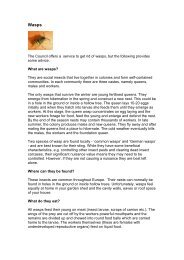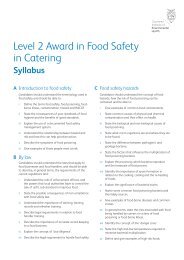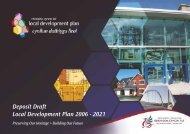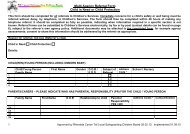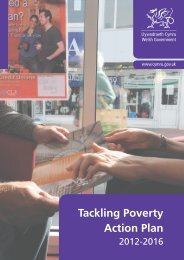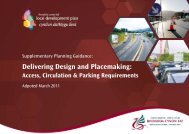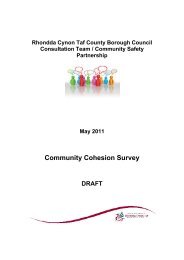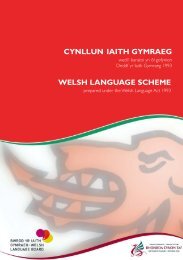LDP nature conservation 2011_Layout 1 - Rhondda Cynon Taf
LDP nature conservation 2011_Layout 1 - Rhondda Cynon Taf
LDP nature conservation 2011_Layout 1 - Rhondda Cynon Taf
- No tags were found...
Create successful ePaper yourself
Turn your PDF publications into a flip-book with our unique Google optimized e-Paper software.
Supplementary Planning Guidance4.2.13 Renewable energy proposals that will cause significant damage to existingcarbon/methane stores, such as ancient woodland or deep peat deposits,should be assessed for their net greenhouse gas emissions. This should beundertaken using national and international guidance and best practicerelating to carbon budgets.4.2.14 The design of wind farms on the upland afforested plateau must addressthe impact on the deep peat soils and hydrology, of the individualturbines, the access and the power line infrastructure. Developers will beexpected to survey, to map the extent of the habitat and features presenton the site and in the surrounding area. The assessment should includethe alternative designs or locations considered; how adverse effects willbe avoided wherever possible; how unavoidable impacts will be reducedand mitigated; and how impacts, that cannot be avoided or mitigated, willbe compensated. Proposals for the long-term management of habitat andmonitoring of impacts will be required. Major wind farms may also havesignificant impacts on bird and bat populations and the developer shouldindicate how these impacts have been avoided, minimised orcompensated for. However, it should be considered that large windfarmprojects will be subject to the requirements of the Environmental ImpactAssessment Regulations. The issues set out in this SPG should therefore notresult in a duplication of the scoping requirements for the environmentalstatement of the Environmental Impact Assessment process.4.2.16 Biomass energy proposals should also be assessed for their net carbon savingscontribution. Energy crops that are dependent on high levels of manufacturedfertiliser input or high transport energy demands are unlikely to lead to reducedcarbon emissions. Displacement of local food production on better qualityagricultural land will not be encouraged, although agricultural waste (e.g. straw)may provide feedstock for small scale biomass developments.4.2.17 The Environmental Impact Assessment Regulations (semi-natural areas anduncultivated land) will apply if semi-natural or uncultivated land is broughtinto production. Biomass proposals should avoid areas of high <strong>nature</strong><strong>conservation</strong> value.4.2.18 Hydroelectric power schemes should be designed to minimise their impacton the river environment and in particular on otters and migratory fish.The Environmental Agency Wales may be consulted by the Council withregard to <strong>nature</strong> <strong>conservation</strong> impacts.4.2.19 Small scale solar, photovoltaic and geothermal energy proposals areunlikely to have major <strong>nature</strong> <strong>conservation</strong> implications. However, wherebats are likely to be present, further advice should be sought.4.2.15 Small scale and domestic wind turbines may also have impacts on birds andbats, which should be considered in the design and location of the turbine.12 • Local Development Plan 2006 -2021





